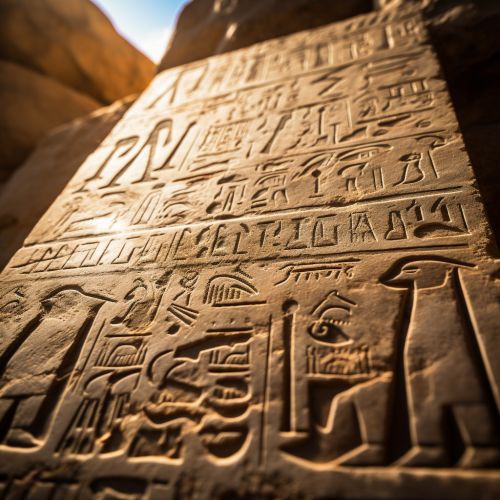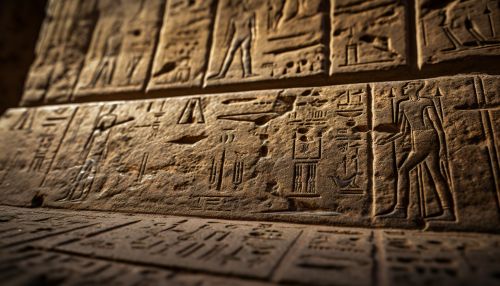Hieroglyphs
Introduction
Hieroglyphs are a system of writing that uses pictures to represent words or sounds. They were used by several ancient cultures, but are most commonly associated with the ancient Egyptians. Hieroglyphs were used for formal writing, such as on stone monuments and in tombs. They were also used in religious texts and for recording historical events.


Origins of Hieroglyphs
Hieroglyphs are believed to have originated in Egypt around 3200 BC. The oldest known examples of hieroglyphic writing are found on labels attached to the tombs of pharaohs and other high-ranking officials. These early hieroglyphs were logographic, meaning each symbol represented a word or phrase. Over time, the system evolved to include phonetic elements, where symbols represented sounds.
Structure and Use of Hieroglyphs
Hieroglyphs can be written in rows or columns, and can be read from left to right or right to left, depending on the direction in which the characters are facing. They can also be read from top to bottom. This flexibility in direction is unique to hieroglyphic writing.
Hieroglyphs were used for a variety of purposes, including religious texts, historical records, and administrative documents. They were also used in magic spells and for divination. Hieroglyphs were considered a sacred script, and were used primarily by priests and the royal court.
Decipherment of Hieroglyphs
The understanding of hieroglyphs was lost by the end of the 4th century AD, as the use of the Greek alphabet became more widespread in Egypt. The last known use of hieroglyphs was in a temple on the island of Philae, in 394 AD.
The decipherment of hieroglyphs began with the discovery of the Rosetta Stone in 1799. The stone contained a decree issued in 196 BC, written in three scripts: Greek, Egyptian hieroglyphs, and Demotic (a later form of Egyptian). The Greek text was translated first, and this provided the key to deciphering the other two scripts.
Legacy of Hieroglyphs
The decipherment of hieroglyphs in the 19th century sparked a renewed interest in ancient Egypt, and led to the development of Egyptology as a scientific discipline. Today, hieroglyphs are a subject of study for linguists, historians, and archaeologists. They provide a valuable source of information about ancient Egyptian culture, religion, and history.
